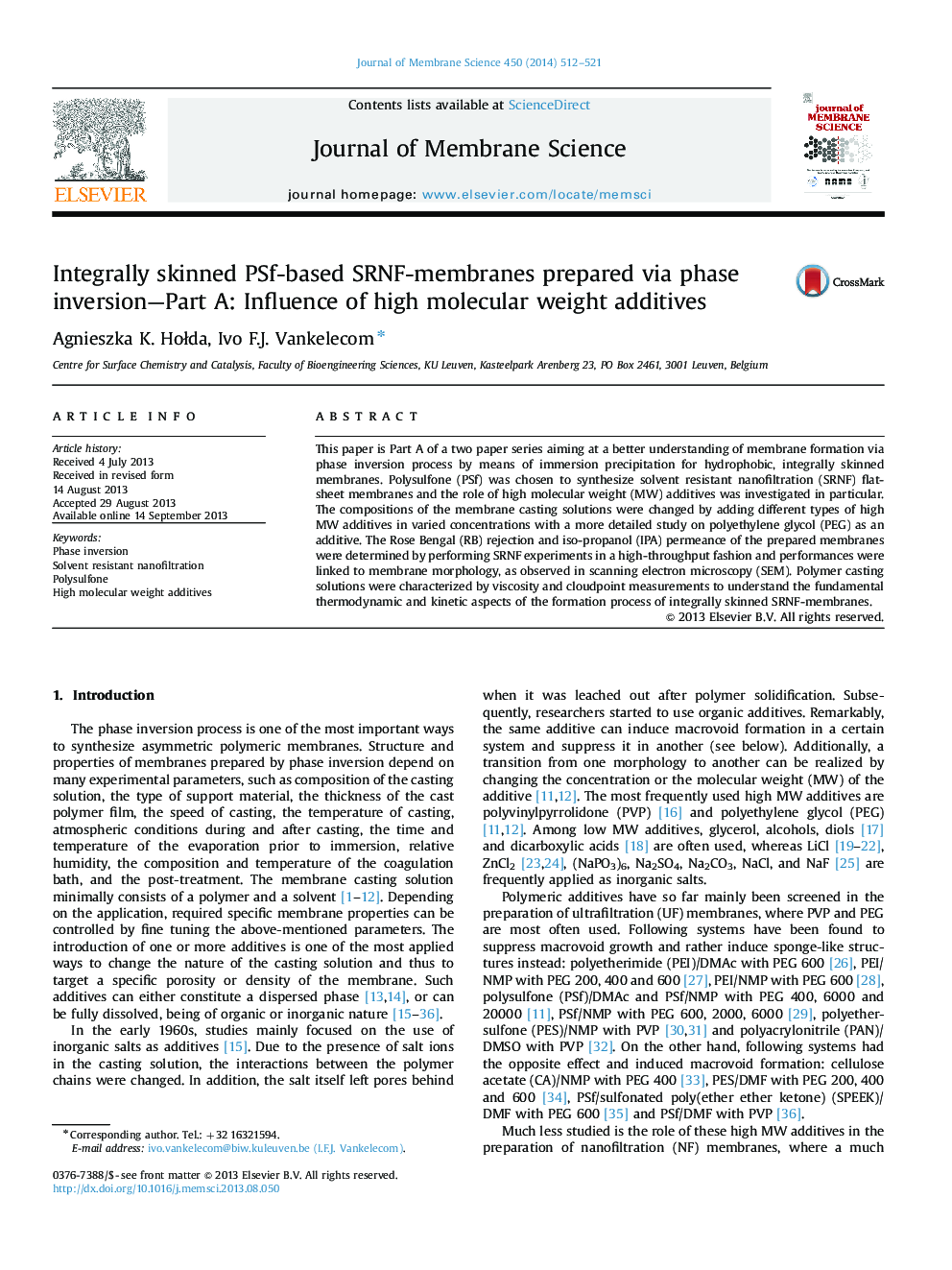| Article ID | Journal | Published Year | Pages | File Type |
|---|---|---|---|---|
| 633875 | Journal of Membrane Science | 2014 | 10 Pages |
•Effect of high MW additives on membrane structure and SRNF performance.•High PEG concentrations suppress macrovoid formation.•Low MW PEG increases membrane fluxes by leaching out.•Non-PEG additives led to membranes with lower rejections than the reference one.•Critical value for PEG concentration was observed at ±5 wt% for some PEGs.
This paper is Part A of a two paper series aiming at a better understanding of membrane formation via phase inversion process by means of immersion precipitation for hydrophobic, integrally skinned membranes. Polysulfone (PSf) was chosen to synthesize solvent resistant nanofiltration (SRNF) flat-sheet membranes and the role of high molecular weight (MW) additives was investigated in particular. The compositions of the membrane casting solutions were changed by adding different types of high MW additives in varied concentrations with a more detailed study on polyethylene glycol (PEG) as an additive. The Rose Bengal (RB) rejection and iso-propanol (IPA) permeance of the prepared membranes were determined by performing SRNF experiments in a high-throughput fashion and performances were linked to membrane morphology, as observed in scanning electron microscopy (SEM). Polymer casting solutions were characterized by viscosity and cloudpoint measurements to understand the fundamental thermodynamic and kinetic aspects of the formation process of integrally skinned SRNF-membranes.
